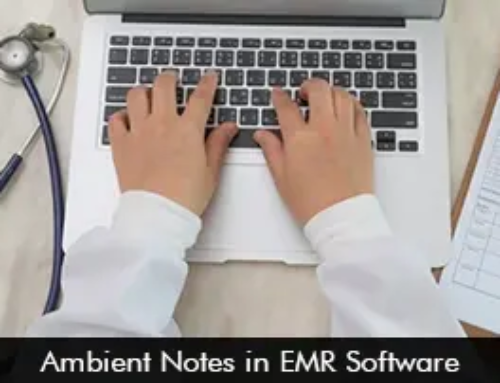An Electronic Medical Record (EMR) Software and an Electronic Health Record (EHR) system, refers to the electronic storage of a patient’s medical history including personal information, diagnosis, prognosis, treatment, and physician notes. Recently, the healthcare industry has seen EMR Systems extend to include the patient’s Care Plan. These are all stored digitally to ease the facilitation of treatment and sharing the record between treating organizations and physicians in different settings such as Primary Care, Tertiary Care, Ambulatory Care, and Community Care. The purpose of the EHR software is to present the treating professional with the most accurate and up-to-date information, on demand.
History
Before the advent of the Digital Age, medical records were committed to paper; they were the precursor to electronic medical record solutions. This presented several problems such as illegible handwriting, lost records, and issues sharing those records between various care settings. This became slightly less problematic with the introduction of fax machines and dedicated fax lines. As the digital revolution progressed, the recording of information became electronic around the turn of the 1960s. The transition to electronic storage saw a boom in software applications that could store more than just a medical record. As database technology became more widely accessible, it became easier to store more information related to patient treatment, and healthcare organizations began using EMR systems.
Dedicated Applications
The late 1980s and early 1990s witnessed a boom in the provision of dedicated software applications that dealt specifically with EHR Software. These applications were small, clunky, and only available to those who bought the EMR System license. They also only cater to various specialisms. These applications grew in size and offering as organizations grew to provide more and more services.
The Cloud Boom
At the turn of the Millennium, application developers started to offer their applications across the Net, and that propelled the advent of SaaS (Software as a Service). This removed the need for organizations to have large and complicated IT equipment and infrastructures the applications could be limitless in their offering with no confines on how much data was stored. Cloud-based EMR software offers more flexibility and even better protection of patient health records.
EHR Software Security
It is critical to protect electronic health information, especially when cyber-attacks are on the rise. One of the main benefits of implementing electronic medical records software is that it ensures that the medical practice is HIPAA-compliant and that health records are strongly encrypted. EMR Software vendors that offer compliance with ICD9/10, CPT, and other EHR standards provide the highest security.
Features present in a top-ranked EMR Software
A good EHR software will offer the following tools and capabilities to maximize practice profitability, streamline workflows, and improve patient care.
- Cloud-based and mobile-friendly software platform.
- In-built customizable templates.
- Charting tools.
- Lab integrations to seamlessly submit lab orders from any device and upload results into the patient charts.
- E-prescribing (e-Rx) to enhance patient safety.
- Billing and coding.
- Telemedicine platform.
- HIPAA-compliant patient portal.
Adoption of EMR software in the US
Healthcare organizations and hospitals in the United States have deployed Electronic Health Records (EHR) Software to streamline daily workflows. According to the 2018 Annual Update on the Adoption of a Nationwide System for the Electronic Use and Exchange of Health Information, 96% of non-federal acute care hospitals and 78% of physicians based in office leveraged certified Health IT. The EHR software system allows for the secure storage and exchange of patient data to improve care coordination








